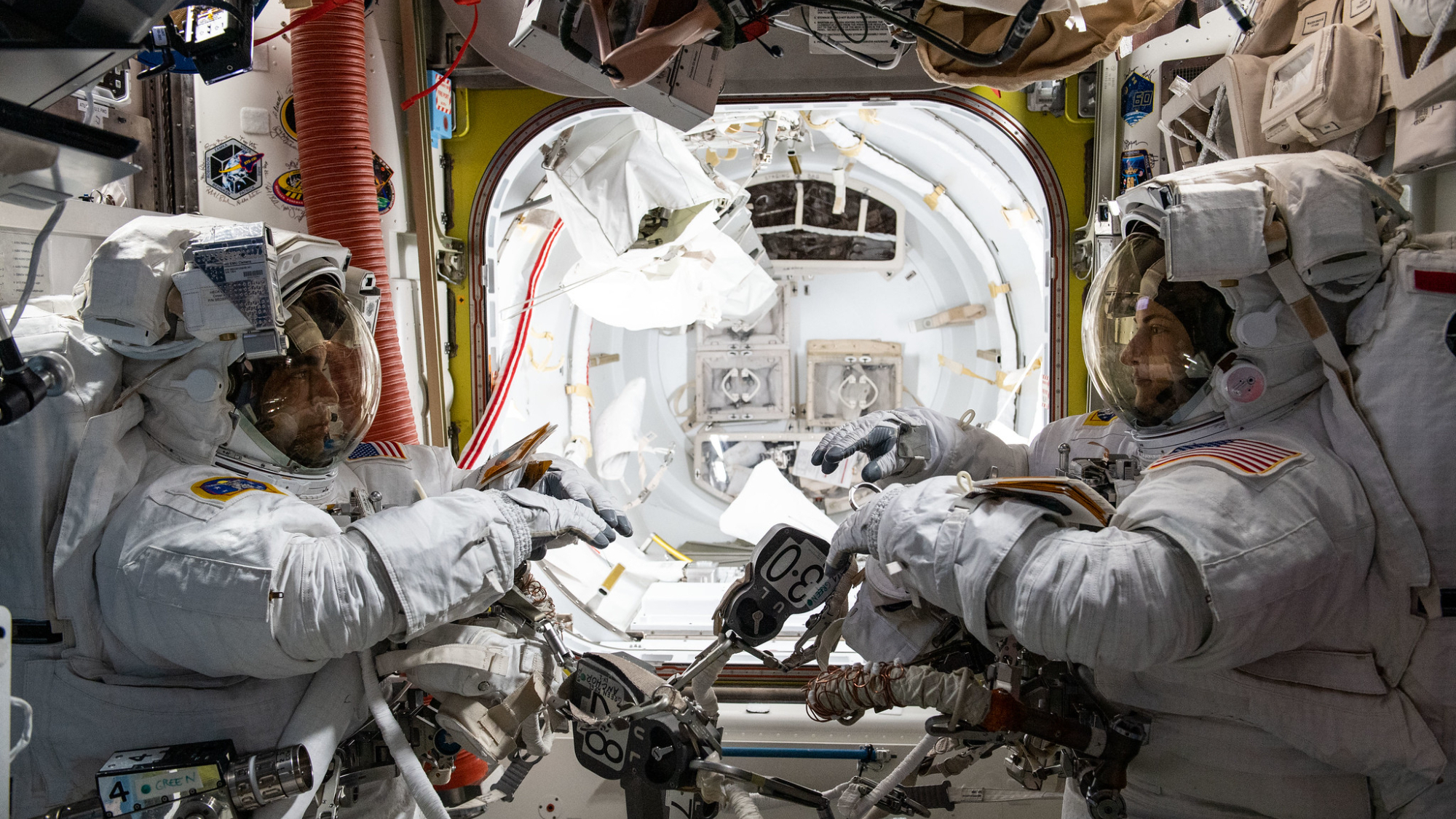Watch how NASA astronauts communicate in space without speaking (video)
Human beings are an extremely loquacious species that use speech as our most dominant form of communication ... some of us MUCH more than others. While certain folks are prone to talk less and listen more, the instinct to verbalize emotions and thoughts is a natural mechanism.
But in the cold vacuum of space, astronauts who call the heavens their workplace must rely on other means of sharing to get their points or instructions across in the event of their radio systems and communication channels going down or some other unexpected emergency arises during a mission or spacewalk.
To aid in the development of essential nonverbal skills, NASA astronauts are required to understand and practice silent signals that convey everything from numbers and emotions, to air pressure malfunctions and radio issues. Many of these similar gestures can be observed between scuba divers, pilots, and military combat units.
Related: What It's Like to Become a NASA Astronaut: 10 Surprising Facts
In this new video from NASA's STEM YouTube channel for students, astronauts Raja Chari and Kayla Barron go over and demonstrate some of the interesting nonverbal ways they've learned to clearly express themselves while training to live and work on the International Space Station.
"We really want to check on each other, check on our buddies," Barron explained in the instructional video. "So the way we usually do that is we use the “okay” hand symbol, and we'll use it as a question and as an answer. So if I'm pointing at Raja and then giving him the 'okay' sign, I'm saying 'are you okay?' And if he is, he'll tell me 'I am okay.'"
Related: How astronauts prepare for the unknown in space: An interview with NASA's Victor Glover
Breaking space news, the latest updates on rocket launches, skywatching events and more!
Transmitting essential information in the hazardous environment of low-Earth orbit requires that these standard hand gestures be memorized and performed flawlessly.
"There's a lot of nonverbal that just comes from knowing and working with people that makes a big difference when you’re working day in and day out, especially on a high stress thing like a spacewalk," Chari adds in the short lesson. "Just the look on someone's face can tell you either, 'yeah, I’m good with this plan,' or 'I've got reservations.' Maybe we should stop and talk about this. And you can do all this with just a glance, even through the glass of the space helmets."
Follow us @Spacedotcom, Facebook and Instagram.

Jeff Spry is an award-winning screenwriter and veteran freelance journalist covering TV, movies, video games, books, and comics. His work has appeared at SYFY Wire, Inverse, Collider, Bleeding Cool and elsewhere. Jeff lives in beautiful Bend, Oregon amid the ponderosa pines, classic muscle cars, a crypt of collector horror comics, and two loyal English Setters.


